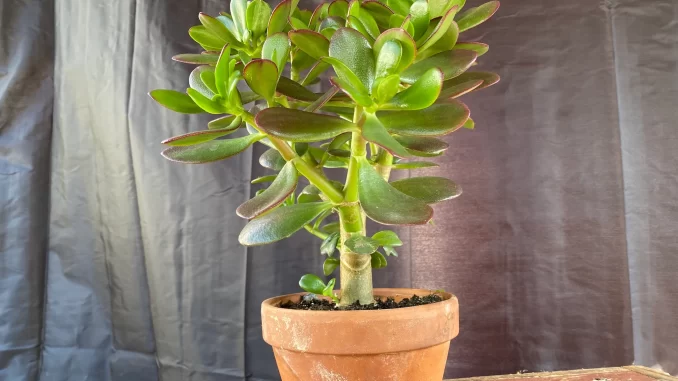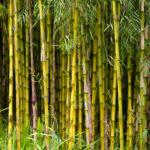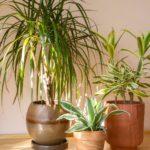
Last Updated on by Sabina
Jade Plant also known as Crassula ovata, is a popular succulent plant that is native to South Africa. It is highly regarded for its attractive and fleshy leaves, which are typically a vibrant green color, although some varieties may have a hint of red or yellow. The Jade Plant is a versatile and resilient plant that can thrive both indoors and outdoors, making it a favorite choice among plant enthusiasts.

One of the standout features of the Jade Plant is its ability to store water in its leaves, allowing it to withstand periods of drought. This makes it an excellent choice for those who may not have a green thumb or tend to forget to water their plants regularly. In fact, overwatering can be detrimental to the Jade Plant, so it’s important to allow the soil to dry out between waterings.
When it comes to light requirements, the Jade Plant prefers bright, indirect light. It can tolerate some direct sunlight, but excessive exposure can cause sunburn on its leaves. Placing the Jade Plant near a window that receives bright but filtered light is usually ideal. If grown indoors, it’s important to rotate the plant occasionally to ensure all sides receive adequate light and prevent it from leaning towards one direction.
In terms of soil, the Jade Plant thrives in well-draining soil that allows excess water to flow through easily. A mixture of regular potting soil and perlite or sand can provide the ideal growing medium. As with most succulents, it’s important to avoid using heavy, moisture-retaining soils that can cause root rot.
When it comes to temperature, the Jade Plant prefers moderate to warm conditions. It can tolerate a range of temperatures, but it’s best to keep it away from extreme cold or frost. Ideally, maintaining a temperature between 65-75°F (18-24°C) is suitable for the Jade Plant.
Propagation of the Jade Plant is relatively easy and can be done through stem or leaf cuttings. Simply allow the cuttings to dry for a day or two, and then place them in well-draining soil or water until roots develop. With proper care, the Jade Plant can grow into a beautiful, bushy plant that adds a touch of elegance to any space.
In terms of maintenance, the Jade Plant is relatively low-maintenance. It requires minimal pruning, mainly to remove any dead or unhealthy leaves. Fertilizing is not necessary during the winter months when the plant goes into a dormant phase, but during the growing season, a balanced succulent fertilizer can be applied once every few months to promote healthy growth.
Overall, the Jade Plant is a wonderful addition to any plant collection. Its unique appearance, ease of care, and ability to thrive in various conditions make it a popular choice for both beginner and experienced plant enthusiasts. Whether displayed as a standalone plant or incorporated into a succulent arrangement, the Jade Plant brings a touch of natural beauty and tranquility to any space.
Jade Plant Care
Jade plants, also known as Crassula ovata, are popular succulent plants that are relatively easy to care for. Here are some guidelines for caring for a jade plant:
Light: Jade plants prefer bright, indirect light. They can tolerate some direct sunlight, but too much can lead to sunburn on their leaves. Place your jade plant near a window that receives bright, filtered light, or provide supplemental grow lights if needed.
Temperature: Jade plants prefer moderate to warm temperatures. They can tolerate a wide range, but it’s best to keep them away from extreme cold or frost. Maintain a temperature between 65-75°F (18-24°C) for optimal growth.
Watering: Jade plants are succulents and have the ability to store water in their leaves. Allow the soil to dry out between waterings and then water thoroughly, making sure excess water drains out of the pot. Overwatering can lead to root rot, so it’s important to avoid soggy soil. In general, water your jade plant when the top inch of soil feels dry to the touch.
Soil: Use a well-draining soil mixture for your jade plant. A blend of regular potting soil and perlite or sand works well. Avoid heavy, moisture-retaining soils that can cause root rot.
Fertilizer: Jade plants are not heavy feeders, so they don’t require frequent fertilizing. During the growing season (spring and summer), you can feed your jade plant with a balanced, water-soluble fertilizer formulated for succulents or cacti. Follow the instructions on the fertilizer packaging and apply it every few months.
Pruning: Jade plants require minimal pruning. Remove any dead or unhealthy leaves to maintain the plant’s overall health and appearance. You can also prune to shape the plant if desired.
Propagation: Jade plants are easy to propagate. You can propagate them from stem or leaf cuttings. Allow the cuttings to dry for a day or two, and then place them in well-draining soil or water until roots develop.
Pest control: Jade plants are generally resistant to pests, but occasionally they can be affected by mealybugs or spider mites. Keep an eye out for any signs of infestation, such as sticky residue, webbing, or small insects. If necessary, treat the plant with an appropriate insecticide or use natural remedies like neem oil.
By following these care guidelines, your jade plant should thrive and bring beauty to your home or garden. Remember to observe your plant closely and adjust care as needed based on its specific conditions and requirements.
How to Propagate Jade Plant
Jade plants are relatively easy to propagate through stem or leaf cuttings. Here’s how you can propagate a jade plant:
Select a healthy stem or leaf: Choose a stem or leaf that is mature and in good condition. Avoid using stems or leaves that are damaged or diseased.
Prepare the cutting: For stem cuttings, use a clean, sharp knife or scissors to cut a section of the stem that is about 3-4 inches (7-10 cm) long. Remove any lower leaves near the cut end, leaving a few at the top. For leaf cuttings, gently twist or cut off a leaf from the plant, ensuring that you get a clean break at the base.
Allow the cutting to dry: Place the stem or leaf cutting in a cool, dry location for a few days. This step allows the cut end to callus, which helps prevent rotting when the cutting is planted.
Prepare the planting medium: Choose a well-draining soil mixture for rooting the cutting. A blend of regular potting soil and perlite or sand works well. Alternatively, you can root the cutting in water.
Plant the cutting: If using soil, create a small hole in the soil mixture and insert the cut end of the stem or leaf into the hole. Gently press the soil around the cutting to secure it. If using water, place the leaf cutting in a container with enough water to submerge the base of the leaf but not the entire leaf.
Provide appropriate conditions: Place the planted cutting in a location with bright, indirect light. Avoid direct sunlight, as it can cause the cutting to wilt or burn. Keep the soil slightly moist but not overly wet, or maintain the water level in the container if using water propagation.
Monitor and care for the cutting: Keep an eye on the cutting to ensure it remains healthy and hydrated. Mist the cutting with water occasionally to provide some humidity, especially if using soil propagation. Avoid overwatering, as this can lead to rot.
Root development: Within a few weeks to a couple of months, the cutting should start developing roots. You may see new growth emerging from the top as well. Once the roots are established and the plant shows signs of healthy growth, you can transplant it into a larger pot with regular jade plant care.
Remember to be patient during the propagation process, as it can take some time for the roots to develop. Not all leaf cuttings will be successful, but stem cuttings generally have a higher success rate. With proper care and patience, you can successfully propagate your jade plant and expand your collection.


